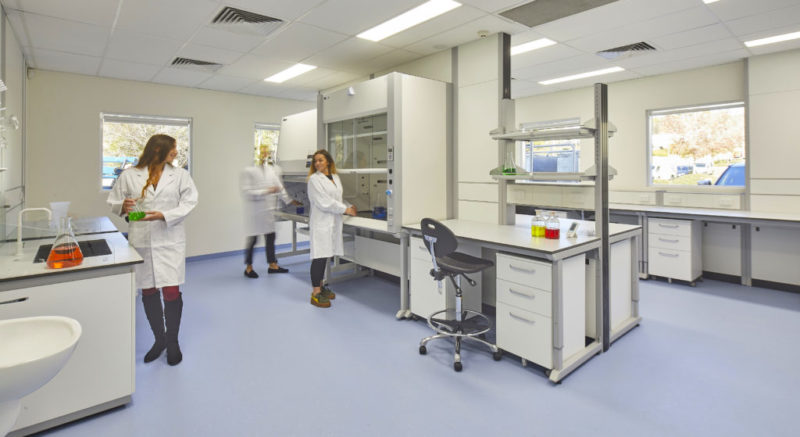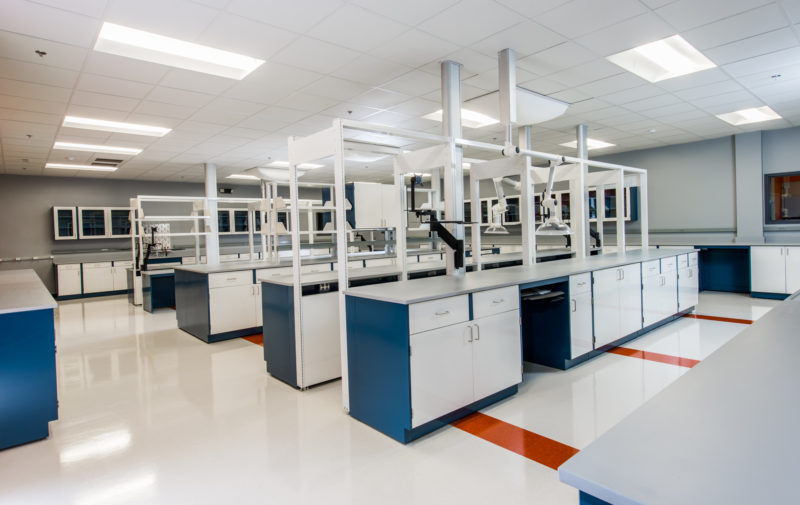What is the difference between wet lab and dry lab?
Laboratories are build based on program requirements and this is the reason behind the presence of many unique labs.
Some laboratories are extremely regulated and tend to have very strict controls in place. It is therefore important to understand these types of laboratories to avoid the occurrence of risks.
The lesson provides deeper insight into the difference between a wet lab and a dry lab. Take the time to read through and understand the differences.
What Is Wet Lab?
The wet lab is a laboratory where chemicals, drugs, liquid, and gaseous compounds are handled with other solutions or in a gaseous phase.
These laboratories normally require benches, sinks, hoods, and safety tools due to the nature of work being undertaken.
The major consideration of this type of laboratory is direct ventilation and piping. Materials used to design the lab tend to be resistant to chemicals and bacteria.
Some of the common experiments being undertaken in wet labs are characterizing enzymes in biology, titration in chemistry, and diffraction of light in physics.
The good news is that these labs are normally designed with biosafety cabinets, chemical fume hoods, specialized freezers, and refrigerators.
Besides that, they are fitted with eye washer stations, showers, and handwashing stations. The labs tend to have a routine procedure and identify patterns that are adjustable.

What Is Dry Lab?
The dry lab is a laboratory where computational analysis, modeling, and simulation take place. The most common equipment for analyzing and evaluating data in the laboratory is the computer.
Examples of an experiment that need computers are quantum state analysis, ground theory methodology, and coding and text interpretation, mapping, or networking.
The laboratory is also fitted with a clean power system for sensitive computers, research instruments, and network communications.
Besides that, it has vibration controls that support cooling and control humidity levels. The main duty of computers in the lab is to carry out analysis, modeling, and simulations.
The major consideration for dry labs is an integrated communication system. Most of the experiments are carried out online and offline.

Comparison Chart: Wet Lab Vs Dry Lab
| Basic Terms | Wet Lab | Dry Lab |
| Meaning | It is a laboratory where chemicals, drugs, liquids, and gases are tested using other solutions. | It is a laboratory where computational analysis, modeling, and simulation take place. |
| Analysis | The main component for analysis is liquid. | The main equipment for analysis is electronic equipment such as computers. |
| Examples of Experiments | Characterizing enzymes in biology, titration in chemistry, and diffraction of light in physics. | Quantum state analysis, ground theory methodology, and coding and text interpretation, mapping, or networking. |
| Inside Lab Materials | Tend to be resistant to bacteria and chemicals | Presence of clean power systems for sensitive computers, research instruments, and network communication. |
| Lab Design | Fitted with Biosafety cabinets, specialized refrigerators, and freezers. | Fitted with HAVC for enhancing cooling and control of humidity level |
| Equipment | Several equipment and facilities that play different roles | Only computers are present for analysis, modeling, and simulations. |
| Major Consideration | Benches, sinks, hoods safety equipment, direct ventilation, and piping | An effective integrated communication system |
| Rules and Regulation | Experiments occur under strict routine procedures and adjust to an identical pattern. | Experiments occur inside the online or offline mode. |
| Reference | This refers to the particular person of liquids for the analysis and computational features. | Apply to utilize laptop programs and software program for analysis and experimentation. |
Core Differences Between Wet Lab and Dry Lab In Point Form
- An example of experiments taking place in the wet lab is the mixing of iodine inside the salt and chemical reactions to result in oxygen charge while for the dry lab is heat and thermodynamic analysis attained on an automotive engine.
- Most of the experiments in wet lab tend to follow a routine procedure and adjust to the identical pattern while those of dry lab occurs inside the offline mode and some on-line.
- The dry lab uses computers for analyzing and experimentation whereas wet lab uses liquids for the analysis and computational features.
- The wet lab has materials and final finishes that are resistant to bacteria and chemicals whereas dry lab has clean power systems for sensitive computers, research instruments, and network communication.
- The major consideration in the wet lab are benches, sinks, hoods safety equipment, direct ventilation, and piping while in the dry lab is an effective integrated communication system.
- Wet labs primarily involve liquid analysis whereas dry labs primary involve electronic equipment
- Wet labs have designed with Biosafety cabinets, specialized refrigerators, and freezers whereas dry labs have designed with HVAC control to support cooling and humidity levels.
- Wet labs have different types of equipment and facilities with varied functions whereas dry labs have an effective integrated communication system
Similarities between Wet Labs and Dry Labs
- Both are the places where experiments and analysis are done
- Both have unique design depending on the type of experiment
- Both have apparatus for experiments
- Both have safety and cooling equipment
- Both are control and managed by laboratory professionals
Frequently Asked Questions
- What is Considered a Wet Lab?
A wet lab is a space where an individual handles various types of chemicals and other potential hazards substances. The room is normally designed and controlled to prevent spillage or contamination of chemical liquids.
- What Are Dry Test and Wet Test?
Dry Tests are those tests that are performed with the solid salt or mixtures of salt whereas wet tests are those tests that are performed by dissolving the salt.
You May Also Like:
- Difference between Porcelain and Ceramic
- Difference between Iodometry and Iodimetry
- Difference between Dermatome and Myotome
- Difference between Soluble and Insoluble Fiber
Comparison Video
Conclusion
The core difference between wet lab and dry lab is that wet lab uses liquids for the analysis and experimentations while dry lab uses computers for analyzing and experimentation.
The information in the post is meant for educational purposes only. Therefore, it is worth knowing the difference between a wet lab and a dry lab if you want to undertake a career in laboratory technology.
More Sources and References
- How Do You Like Your Science? NCBI
-
Your Life Science Startup. University Lab Partners